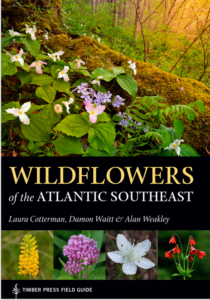
Wildflowers of the Atlantic Southeast
This beautiful book is a functional tool to help you identify wildflowers. Organized by flower color, you can fan …


El inglés es el idioma de control de esta página. En la medida en que haya algún conflicto entre la traducción al inglés y la traducción, el inglés prevalece.
Al hacer clic en el enlace de traducción se activa un servicio de traducción gratuito para convertir la página al español. Al igual que con cualquier traducción por Internet, la conversión no es sensible al contexto y puede que no traduzca el texto en su significado original. NC State Extension no garantiza la exactitud del texto traducido. Por favor, tenga en cuenta que algunas aplicaciones y/o servicios pueden no funcionar como se espera cuando se traducen.
Inglês é o idioma de controle desta página. Na medida que haja algum conflito entre o texto original em Inglês e a tradução, o Inglês prevalece.
Ao clicar no link de tradução, um serviço gratuito de tradução será ativado para converter a página para o Português. Como em qualquer tradução pela internet, a conversão não é sensivel ao contexto e pode não ocorrer a tradução para o significado orginal. O serviço de Extensão da Carolina do Norte (NC State Extension) não garante a exatidão do texto traduzido. Por favor, observe que algumas funções ou serviços podem não funcionar como esperado após a tradução.
English is the controlling language of this page. To the extent there is any conflict between the English text and the translation, English controls.
Clicking on the translation link activates a free translation service to convert the page to Spanish. As with any Internet translation, the conversion is not context-sensitive and may not translate the text to its original meaning. NC State Extension does not guarantee the accuracy of the translated text. Please note that some applications and/or services may not function as expected when translated.
Collapse ▲
This beautiful book is a functional tool to help you identify wildflowers. Organized by flower color, you can fan …
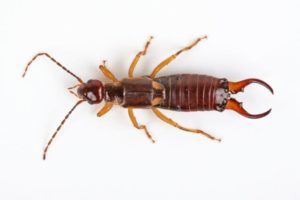
Dr. Robert Orpet | 6/25/2019 | Via Entomology Today The European earwig (Forficula auricularia) may be difficult to appreciate …

When cotton blooms, it’s time to switch sampling and thresholds for plant bugs. This previous article covered why you …
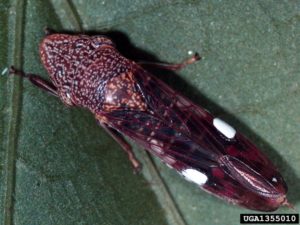
Glassy-winged sharpshooter (GWSS) detections continue in both of our Northeast sites, in Perquimans and Currituck Co., and we captured our …
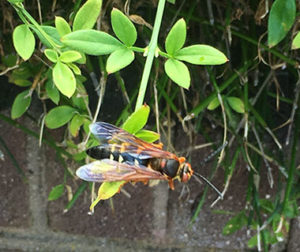
Cicada killer wasps are starting to emerge. This picture was taken on Friday in a landscaped area outside the …

We are starting to catch the glassy winged sharpshooter, a vector of Pierce’s diseases(PD) in one of our northeast …
As more people move to the urban centers of North Carolina, consumers lose previously close connections with where their …
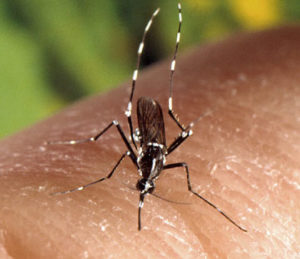
Jake Buhler | 6/2/2019 | National Geographic Insecticides in at least one area are not only failing to control mosquitoes, …

Close to a year ago (June 13, 2018), I wrote “Raining in Mosquitoes” after we had torrential rains in …

With more cotton starting to square, ALL cotton in the state should be scouted so that we maintain acceptable …
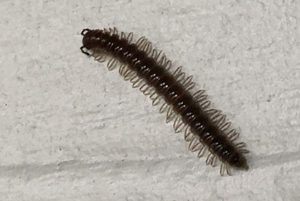
The hot dry weather has caused millipedes to move in search of moister areas which often means they crawl …
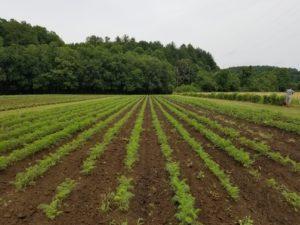
6/6/2019 – There is a whole new “crop” of organic growers out there asking questions about what markets are …

The theme of this week’s post is to PRACTICE PROTECTION! According to my weather apps, a fair amount of …

Corn is susceptible to damage at three stages (roughly): V1 to V6, V14 to VT, and R1 to R4. …
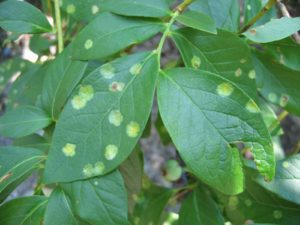
Exobasidium leaf and fruit spot has been reported from numerous locations in NC this year. The disease, caused by …

While the weather has been relatively dry for the region over the past week or so, high relative humidity …